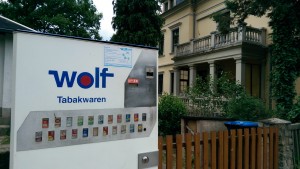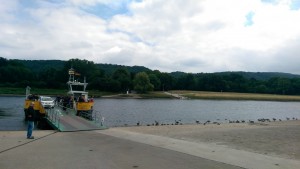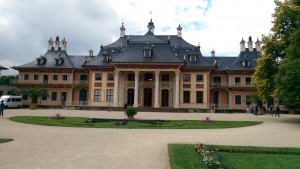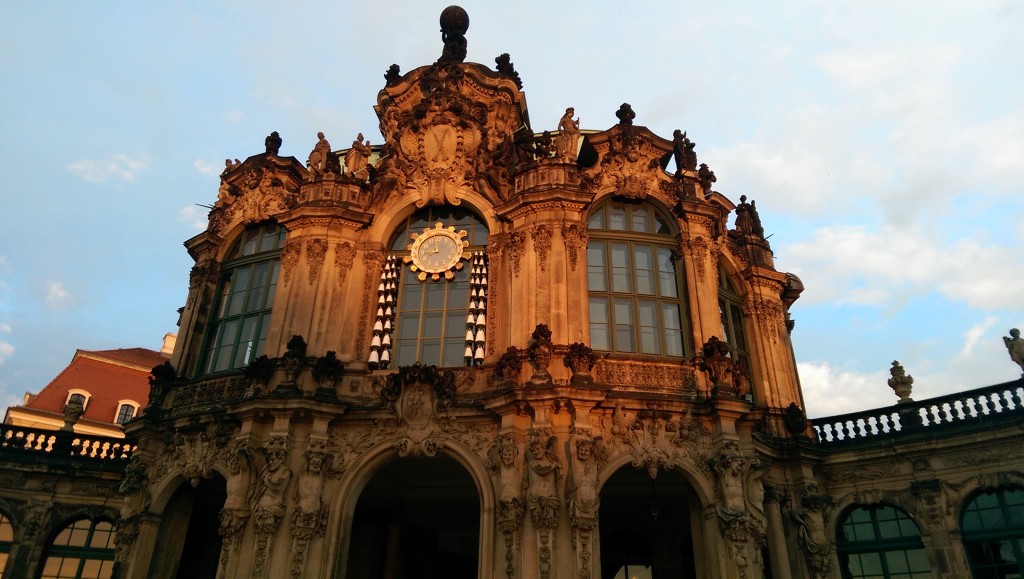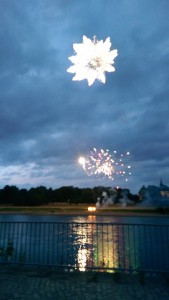By now I was getting brave, so I decided to take a Dresden tram to the end of the line and investigate Pillnitz Castle. Like many European castles, it has existed in various incarnations since the 14th century, but those various incarnations have burned, sank into the swamp, or burned and THEN sank into the swamp. And like all things in Dresden, it was built for someone named Augustus. (Seriously, there are so many Augustuses in Dresden’s history that there’s no way to keep them all straight.)
The directions to Pillnitz Castle online seemed straightforward: take the 2 tram to the end of the line, then take the ferry across the river to the castle. This all seemed fine until I got to the end of the tram line … in a rather nice residential neighborhood with no signs at all. Though there was this, right on the sidewalk:
Because you never know when you’re going to be walking through a stately German neighborhood and realize that you need cigarettes.
Eventually a couple of serious-looking bicyclists passed me, and I decided that that must be the way to the ferry and the castle. Luckily I was right, and I discovered the tiny little ferry whose job it is to make the grueling 30-second trip across the Elbe.
One grueling 30-second trip across the Elbe later, and a bit of following more people who seemed to know where they were going (aided by the fact that you can actually see the castle from the river), and I ended up in the Pillnitz gardens.
Mom, these next few pictures are mostly for you.
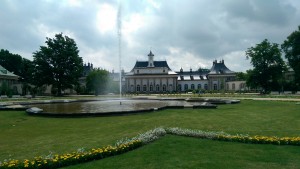 This is the central garden, between the main buildings in the castle complex. I get the feeling that later in summer, these gardens are more filled in; there were lots of workers scampering around doing garden things. It was still lovely though.
This is the central garden, between the main buildings in the castle complex. I get the feeling that later in summer, these gardens are more filled in; there were lots of workers scampering around doing garden things. It was still lovely though.
Here’s a closer shot of the main building:
And here’s a 360 degree panoramic shot — click on it to enlarge it for the full effect.
It was a lovely cool day, so I decided to walk through the rest of the (large!) gardens. As I mentioned above, I think some things weren’t fully planted yet (the Chinese garden and the Dutch garden were basically just grass fields, disappointingly); I also saw signs that there had been some flooding there recently, so that may have been part of why some of the gardens weren’t fully completed. There were still a few striking elements in the garden. For example, this:
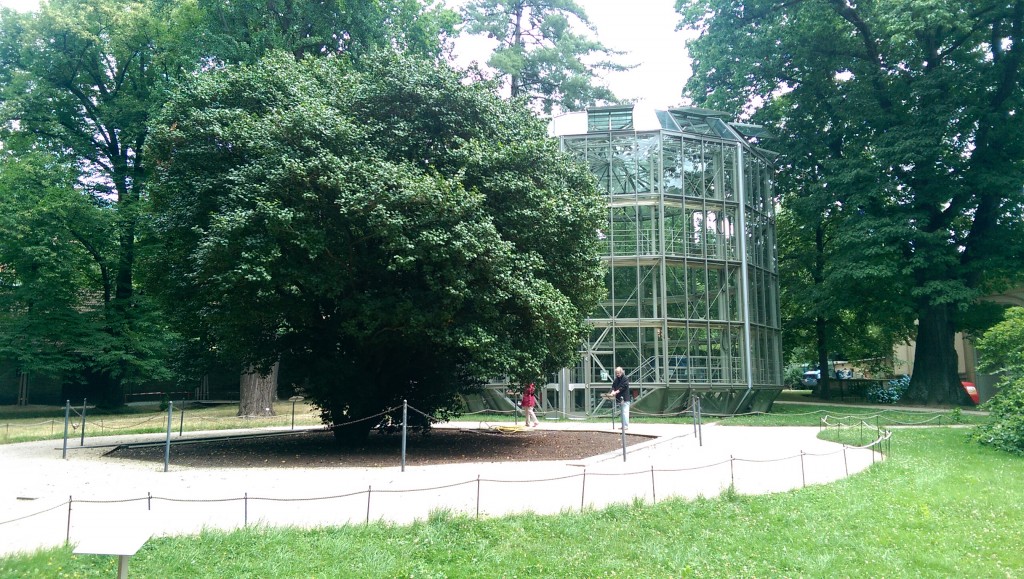 This is a more than 200 year old camellia tree that was supposedly brought over from Japan and planted in this location in 1801. Since Dresden’s climate is a little bit different than Japan’s, they’ve had to figure out ways to protect the tree during the winter. The glass house you see behind the tree is on rails, and in wintertime it slides on the rails over the tree and protects it with a computer-controlled climate inside the chamber. There was also an orangery (which appeared to be undergoing renovation), because an orangery was a status and wealth symbol in the 17th-19th centuries, and the Augustuses weren’t ones to skimp on status and wealth symbols.
This is a more than 200 year old camellia tree that was supposedly brought over from Japan and planted in this location in 1801. Since Dresden’s climate is a little bit different than Japan’s, they’ve had to figure out ways to protect the tree during the winter. The glass house you see behind the tree is on rails, and in wintertime it slides on the rails over the tree and protects it with a computer-controlled climate inside the chamber. There was also an orangery (which appeared to be undergoing renovation), because an orangery was a status and wealth symbol in the 17th-19th centuries, and the Augustuses weren’t ones to skimp on status and wealth symbols.
After more meandering, I took the ferry back across the river, had a delicious sausage for a late lunch at the ferry landing, and wandered back to the tram stop to head back into town. Dan’s posters were that afternoon and I wanted to try to crash the conference and see them. (Seriously, this conference had the best security of any conference I’ve ever seen. No badge? No conference!) Except for the small security issue of half of the conference attendees wandering out from the poster presentation room onto the patio to smoke. Conference crash success!
However, there was no way I was going to get to crash the banquet that evening, so Dan went to the banquet and I meandered some more in the old town area. I wandered through the Zwinger again right at sunset and took some lovely photos:
I’m pretty sure one of us mentioned the Zwinger already, but just in case, it’s a large palace/fortification that these days is a museum complex (the Scientific Instrument museum we went to was in the Zwinger).
Like many thin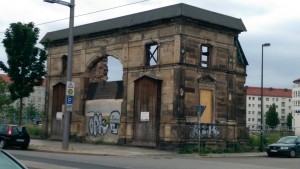 gs in Dresden, the Zwinger was mostly destroyed during the 1945 bombing, but it was rebuilt. (The Orangery, though, has seen better days. Of course the Zwinger had an orangery.)
gs in Dresden, the Zwinger was mostly destroyed during the 1945 bombing, but it was rebuilt. (The Orangery, though, has seen better days. Of course the Zwinger had an orangery.)
Never let beautiful light from a sunset go to waste.
I started heading back to the conference center, thinking I might be able to crash the banquet now that dinner was over. Dan, however, had already left the banquet and was in the hotel room. We decided to go for a walk along the Elbe, since it was our last night in Dresden. As we walked in front of the conference center, we noticed that almost everyone at the banquet was out on the patio, looking towards the river. Twenty seconds later, the conference fireworks started.
You heard me. Conference fireworks. The glowing bit at the bottom says “IPAC 14”. We had a riverfront, unobstructed view of the roughly ten-minute long conference fireworks display.
SMT has a lot to live up to now.

